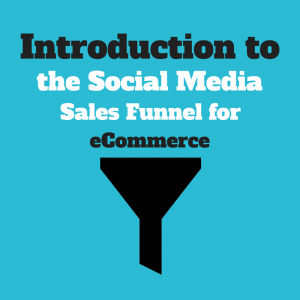
If not, the sales funnel, in essence, is a visual representation of the different steps the sales and marketing team take to move customers from the awareness to purchase.
This concept is as old as business itself, but it has changed in recent times due to the rise of the Internet and social media.
The Importance of Social Media in the Sales Funnel
Before, most consumers learned about products through TV commercials and print ads. With the advent of technology and user-generated content, consumers can now make more informed decisions based on peer recommendations and customer reviews. In fact, 92 percent of consumers trust word-of-mouth advertising above all other forms.

After all, with the Internet and social media comes distraction. Consumers are unlikely to make a purchase the first time they hear about your company and it can often take months to build brand awareness. Not only that, but you have to continually remind consumers of your existence due to the sheer amount of other brands clamoring for their attention. Social media is one of the best ways to hold people’s attention throughout the entire sales funnel.
So how do you leverage social media to convert people into customers?
Choose the Right Network
There are dozens of different social marketing tools at your disposal but there’s no need for you to be on all of them. In fact, trying to be on every single one might actually do more harm than good.
Focus on the social network where the largest concentration of your ideal demographic is located. Considering 73 percent of adults are on at least on social network, you’ll definitely find your audience on at least one platform.

Your social profile will likely be the first contact your customer has with your brand, so make sure you make a good impression by:
- Completely filling out your profile
- Regularly updating
Post Quality Content
Great content can help build awareness, generate interest, convert and build loyalty all at the same time. It should provide value to the consumer without pressuring them to convert or make a purchase.
While this might sound like a roundabout way to attract consumers, it has become its own separate marketing strategy – content marketing. In fact, statistics show that content marketing initiatives generate three times as many leads as traditional methods.
For successful content marketing, you need to understand your audience. One of the best ways to do this is to create your ideal buyer persona and then research them in detail. You should ask yourself the following questions:
- Who do they consider important figures?
- Where do they interact?
- Do they prefer visual- or text-based content?
Engage the Audience
Regardless of what social platform you use, the main point focal point is interaction. This is what sets social media marketing apart from traditional methods.
Your consumers now have a direct line of communication to you and they expect engagement. While it might be time-consuming, engagement is the best way to build a sense of community and also doubles as customer service. This means you need to respond not only to the positive comments, but the critical ones as well with professionalism.
The more you acknowledge the voice of your audience, the more trust and loyalty you will build, which will eventually translate to sales.
Convert to Customers
Once you’ve positioned yourself as an expert in your field and built up enough trust, you can then turn them into paying customers.
You can use your networks to incentivize purchases by offering promotional codes, coupons or loyalty programs to your followers. Still, only 2 percent of shoppers convert on their first visit.
To capture the remaining 98 percent, you should take advantage of retargeting. This keeps track of the people that visit your site by installing cookies on their browser. It will then allow vendors to display retargeting ads to potential customers when they visit other sites including Facebook.
Be Patient
Getting consumers to go through the sales funnel takes much longer now than it did in the past thanks to the numerous distractions available on the Internet. Still, if you post frequent, powerful messages and keep track of key performance indicators you will eventually see results.
Remember that today’s customers are not looking for a hard sell. They want to connect on a personal level with brands through thoughtful and authentic engagement.
P.S. For more social media marketing tips, check out our free eBook below!

Ivan Serrano is a social media, business and finance journalist living in the Bay Area of California.
Recommended articles
 Facebook Ads for eCommerce: 16 Strategies, Examples & Tips
Facebook Ads for eCommerce: 16 Strategies, Examples & Tips
 How to Build a Winning eCommerce Ads Strategy
How to Build a Winning eCommerce Ads Strategy
 Google Ads for eCommerce: Everything You Need to Know
Google Ads for eCommerce: Everything You Need to Know
 10X Your Traffic with PPC Management Software
10X Your Traffic with PPC Management Software
Comments
Powered by Facebook Comments


